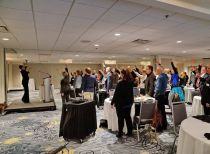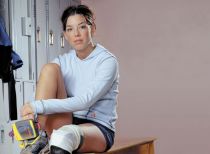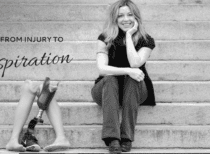Keynote Speeches
LEAD IT. LIVE IT. THE LEADERSHIP LIFESTYLE.
The message is clear: when leaders champion safety as a core value—fostering open communication, psychological well-being, and inclusivity—they create workplaces where
people feel supported, look out for one another, and prevent harm before it happens.
Candace promotes the practice of checking in to ensure what we say we believe about safety is supported by our actions.
This speech explores the vital connection between leadership and workplace safety, emphasizing that true leaders don’t just enforce rules—they inspire a culture where safety is valued, respected, and prioritized.
Through real-world examples and personal insights, it
highlights how leadership at every level shapes attitudes, behaviours, and expectations around safety.
A key focus is the power of vulnerability in leadership. When leaders are willing to share their own experiences, admit mistakes, and show that they, too, are continuously learning, they create an environment of trust and openness. This vulnerability fosters stronger connections,
encourages honest conversations about safety concerns, and empowers individuals to speak up without fear.
We all know the right things to do to keep safe, so why aren’t we doing them?
Candace has developed a plethora of mantras throughout her 17 years in the safety industry – but none are as powerful, effective, or as energizing as her call to action for her audience to ‘SEE SOMETHING. SAY SOMETHING!’
By referencing the many contributing factors that led to her workplace incident, she ignites a desire in her audience to answer this call.
Candace uses her own experiences, and encourages her audience to join her by ‘logging into life’ and actively seek out situations where speaking up changes a life for the better.
Perhaps this is reminding someone to buckle up, or simply asking someone how they are doing.
Candace believes that it’s the little things done on a day to day basis that facilitate huge changes. By reminding people that until we achieve ZERO injuries, we can each do ‘one thing safer’ – a challenge accepted by audiences around the world.
It takes ‘Courage to care!’ Speaking up isn’t easy, and peer pressure isn’t something we leave behind when we finish high school – it’s a reality in our workplaces and can cause us to remain silent when our voices need to be heard. Candace encourages her audience to tap in to their “courage to care,” and to act on it, with the realization that each and every day, we all have the capacity to change a life – or maybe even save one.
Expected outcomes
Reduction in recordable injuries, a safety-focused, empowered, cohesive and engaged workforce.
IT COULD HAPPEN TO YOU…
Candace believes that “The first step in NOT getting injured is knowing that you CAN be.”
Her unimaginable experience dispels the myth that we are invincible; what you don’t know, in fact, can hurt you – lessons Candace learned the hard way.
Through sharing her lived experience, Candace recounts the day that changed her life forever. One step over a moving, unguarded conveyer belt changed the course of her life and resulted in the loss of her leg below the knee.
With her ever present sense of humour and passion for her message she emphasizes that when an injury happens, there is rarely only one cause or contributing factor – emphasizing the countless opportunities to intervene in the name of safety.
Candace encourages people to take a leading role in their own health and safety!
Combating complacency, and encouraging people to “focus on focus!” are key components to Candace’s
message. Her story is a reminder that safety isn’t 9-5 – rather, it’s a state of mind, an attitude that we must carry with us throughout our day to day lives.
BRIDGING THE GAP: PSYCHOLOGICAL AND PHYSICAL SAFETY
In a work world that traditionally emphasizes physical safety, it’s crucial to recognize that true protection begins within – the vital connection between psychological health and physical safety.
A key component is the role of leadership. We delve into the transformative power of leaders who dare to show vulnerability. When leaders openly express their own challenges, uncertainties, and emotions, they create a ripple effect. The openness breaks down barriers,
fostering a culture where psychological safety thrives, enabling everyone to bring the whole selves to work without fear of judgment.
By addressing the often-overlooked aspects of psychological safety, we’ll reveal how mental
well-being acts as the foundation not only for preventing incidents and ensuring physical safety, but also cultivating a culture of caring in the workplace.
Attendees will leave with a deeper understanding of why protecting our minds is the first step in safeguarding our bodies, equipped with actionable strategies to create a safer, more supportive environment for everyone.















Similar Speakers 123